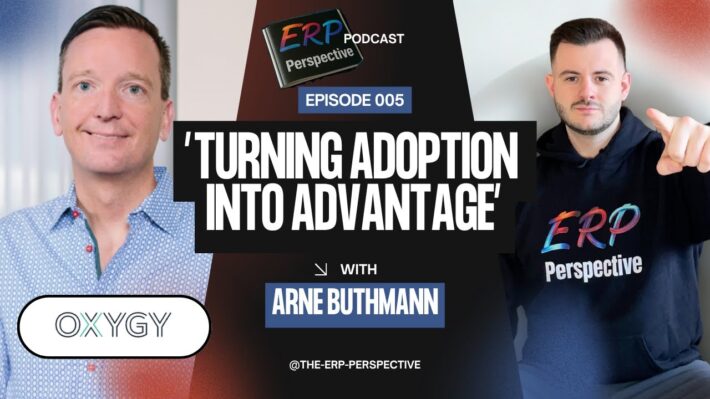Five recommendations for successful project portfolio management in the digital world
We all know that the pace of change increases continuously, but faced with the COVID-19 pandemic we learned that there are forces making us change even faster and in a global perspective. Process redesign was required to enable remote customer service and home office introduction at a worldwide scale. Lock-downs caused dramatic global shifts in the majority of markets. The COVID-19 stress test made it even more visible that companies with advanced project portfolio management capabilities were able to adapt quicker and align the current focus with the new priorities.
To enable this flexibility, there are several critical aspects to consider. First of all, a well communicated strategy that is understood at all levels is key. It is the required starting point to communicate the change. After this, the right program and project management approach with focus on incremental value delivery helps to produce the next increment and adjust priorities without major losses. Mature change management processes, which enable quick accommodation of the new conditions, are also essential. Of course, this aspect is more cultural than procedural and requires time to achieve improvement. The project portfolio management plays a key role however, because it enables quick decision making – real agility in large-scale organizations. Many organizations succeed in implementation of agile practices at the team level, however at the corporate level they struggle. Wisely implemented portfolio management stimulates agility at the corporate level.
How to implement successful portfolio management in the digital world? Let’s elaborate with the following recommendations:
- Create transparency enabling visualization of not only short-term, but also mid- and long-term goals
- Implement separate processes for strategic and operational project portfolio management
- Make benefit management process shape the organization
- Support the implementation of agile practices at all levels and functions
- Use portfolio management to monetize your current and future digital assets
1. Create transparency enabling visualization of not only short-term, but also mid- and long-term goals
Providing portfolio oversight helps to clarify which programs and projects support which goals. Well communicated project portfolios make the communication of any change easier. The impact of the change on the project portfolio becomes simpler to explain and understand – therefore changes can be implemented faster and more consistently at all levels of organization.
The visualization of the current portfolio helps everybody to better understand the complexity of its nature, current priorities and trade-offs. OKR (Objectives Key Results) implementation is proven to be a successful way of achieving the transparency and generating outstanding results. An Organization’s Roadmap explaining the current and planned projects with goals aligned with strategy and linked to the agreed OKRs creates the transparency needed.
2. Implement separate processes for strategic and operational project portfolio management
Large organizations often struggle with quick decision processes which cover several levels of the organization layers due to their complexity. Portfolio management decisions are a very good example of such decisions. In order to achieve greater flexibility, strategic and operational decision layers should be set-up separately.
Portfolio management at the strategic level needs to focus on strategic goals and the right balance of critical resources to ensure strategic focus. Strategic portfolio management is more stable and focused on the longer term.
Operational portfolio management enables a quick reaction to the constantly changing situation. Managers at the operational level both from business and IT can quickly align to the new priorities and minimize the cost of the change. Teams focused on portfolio management at the operational level have a better understanding of all dependencies, can make faster and better decisions on how to optimize the usage of critical competencies and resources, and can immediately address the identified risk.
3. Make benefit management process shape your organization
Portfolio governance needs to include benefits management to ensure the continuous focus on value delivery at all levels. Benefits management helps to focus on planning what value will be generated by projects we plan, and drawing fact-based conclusions on what value has been in fact delivered.
When correctly implemented, the process of evaluation of achieved results encourages people to make bold decisions to ensure value delivery.
It supports the selection of better projects for implementation, and prevents the initiation of projects with weaker business justification. Business Owners are more motivated to focus on key requirements and quick delivery. It also builds ownership – line managers cannot turn their backs and pretend not to see problematic projects – results from all projects are “on the table” and need to be addressed.
Even after the project completion the project ROI can be improved by ensuring that the promised benefits are being delivered. Correctly implemented portfolio value management processes should drive the portfolio optimization and lead to better business results.
4. Support the implementation of agile practices at all levels and functions
Many organizations nowadays understand and try to implement agile practices. Empowering teams makes organizations more productive, but makes the right project portfolio management even more important.
With an agile approach at the team level, the risk that at the corporate level the organization struggles to follow its strategic priorities increases. While at the team level organizations succeed to improve with agile practices, at the portfolio level they often suffer from a lack of controllability / maneuverability in adapting to changing strategic priorities.
Agility in Portfolio Management processes are supported by transparency of goals and achieved results. Agile approach should be taken in all 3 perspectives:
- To defend current value stream – manage for efficiency and growth your current core business
- To develop new opportunities – nurture emerging businesses to develop the next competitive value streams
- To invest in the future – explore options for future competitive value streams.
Practices like Disciplined Agile can help organizations to implement agile practices not just in software development teams, but across all functions in the organization.
5. Use portfolio management to monetize your current and future digital assets
The COVID-19 crisis accelerated the digital transformation of many organizations. Portfolio management can be used to make the structured approach to identify the new opportunities in the digital world and create a path to make it a reality. Data plays a more significant role in every business. Ability to handle large volumes of real time data creates new business opportunities. With big datasets AI can be utilized to better serve your customer, create new products and services and make your processes more efficient. Therefore, a portfolio strategic plan should include digital assets, especially data, to foster further digitalization of your business model. Data Driven Innovation Canvas could be used to take a structured approach to explore the supply and demand side of your value proposition based on data. Proper portfolio components selection, categorization, prioritization and authorization criteria should be established to ensure full utilization of digital assets.
With proper portfolio management processes in place, visualization of your roadmap and solid benefits management in place, your organization will be able to make the pivot changes to free the resources needed for the projects declaring the greatest value delivery and ensure these are in fact delivered.
About the Author
Witold Hendrysiak is a senior consultant at OXYGY. For 20+ years he has supported organizations to develop and redesign the project portfolio management to support and enable strategy implementation in an agile and effective way. He is very passionate about helping organizations adopt agile practices and achieve world class performance in their processes, applying best project management practices.






